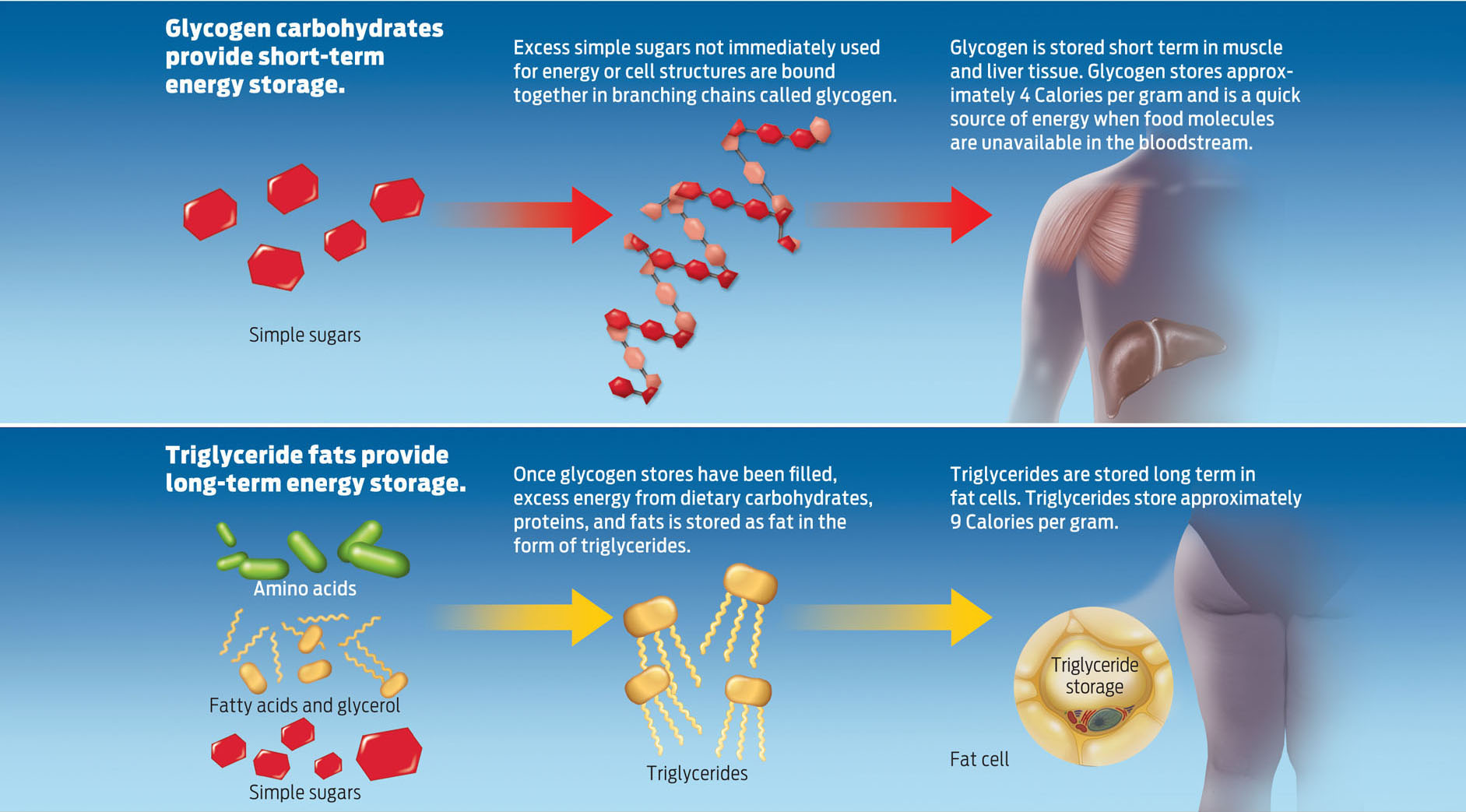Counting Calories
GLYCOGEN A complex animal carbohydrate, made up of linked chains of glucose molecules, that stores energy for short-term use.
TRIGLYCERIDES A type of lipid found in fat cells that stores excess energy for long-term use.
Hunger—the feeling that one needs to eat—is a biological urge, and is tightly regulated. When our body senses it needs energy, it sends a signal to the brain, which tells us: eat! After we have eaten, our body senses that state, too, and sends an opposing signal: I’m full! But we humans eat for many reasons other than hunger—which is when problems can arise. Many of us eat more food than our bodies need, eating either for emotional comfort or for cultural reasons. We also have a natural preference for fatty and sugary foods because such foods are energy dense. For our ancestors, it was likely important to load up on those foods to store energy for times when food was scarce. Today, this ancient taste preference has become a vice that snack food companies have become very good at exploiting. When foods are loaded with sugar and fat, as well as salt, the result is a trifecta of flavors and textures that many people find irresistible.
For the large majority of us, when we eat Calories beyond what our bodies require, the extra energy is stored in one of two places: as glycogen in muscle and liver cells, or as triglycerides in fat cells. Glycogen is the energy-storing carbohydrate found in animal cells. You can think of glycogen as a short-term storage system. When we require short bursts of energy—in a sprint, for example—the body breaks down glycogen to obtain energy. However, because a gram of glycogen stores only half as many Calories as a gram of fat (about 4 Calories per gram versus 9), our bodies would have to carry around twice as much glycogen to store the same amount of Calories. So our bodies store most excess Calories as triglycerides in fat cells, which actually allows us to carry around less weight overall. The body burns this fat only after it has already used up food molecules in the bloodstream and in stored glycogen.
For our ancestors, who lived during times of frequent famine, this system of storing Calories as fat would have come in handy. Their bodies could burn fat for energy to carry them through times of food scarcity. Today, most people in the developed world have plenty of food. But they are more sedentary and eat more Calories than they need—which is why they’ve started to pack on, and keep on, the pounds (INFOGRAPHIC 6.5).
When we ingest more Calories than our bodies need, they are stored as glycogen molecules in muscle and liver cells. Once the body’s glycogen stores have been replenished, any excess Calories are stored as triglyceride molecules in fat cells.
